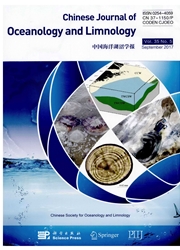

 中文摘要:
中文摘要:
用 10 年(1 月 1998October 日 2007 ) 看海的宽 Field-of-view 传感器(SeaWiFS ) 的数据集,我们通过实验直角的函数(文件结束) 分析在中央西方的华南海(SCS ) 提取了主导的空间模式和叶绿素分发的时间的变化。结果证明第一个文件结束模式被一个高叶绿素集中地区沿着越南海岸描绘。分别地,我们在正常的年里在夏天(JulyAugust ) 并且在冬季(12 月) 发现了二座山峰。第二个文件结束模式被在夏天(JulyAugust ) 扩大朝海的方向到东北的高叶绿素集中的一个塑造喷气的舌头描绘。调查叶绿素集中的 interannual 可变性,我们提取了第一非季节(移开的年度周期) 文件结束模式,哪个表演高空间的可变性离开东南越南海岸。空间模式和时间系数海表面温度模式与那些相应很好,并且密切被相关到 ENSO 事件,与一 7 个月的 lag。
 英文摘要:
英文摘要:
Using 10-year (January 1998-October 2007) dataset of Sea-viewing Wide Field-of-view Sensor (SeaWiFS), we extracted the dominant spatial patterns and temporal variations of the chlorophyll distribution in the central western South China Sea (SCS) through Empirical Orthogonal Function (EOF) analysis. The results show that the first EOF mode is characterized by a high chlorophyll concentration zone along the Vietnam coast. We found two peaks in summer (July-August) and in winter (December), respectively, in normal years. The second EOF mode is characterized by a jet-shaped tongue of high chlorophyll concentration extending seaward to the northeast in slammer (July-August). To investigate the interannual variability of the chlorophyll concentration, we extracted the first non-seasonal (annual cycle removed) EOF mode, which shows high spatial variability off the southeast Vietnam coast. Both spatial pattern and time coefficients correspond well with those of sea surface temperature mode, and are closely correlated to ENSO events, with a lag of 7 months.
 同期刊论文项目
同期刊论文项目
 同项目期刊论文
同项目期刊论文
 期刊信息
期刊信息
